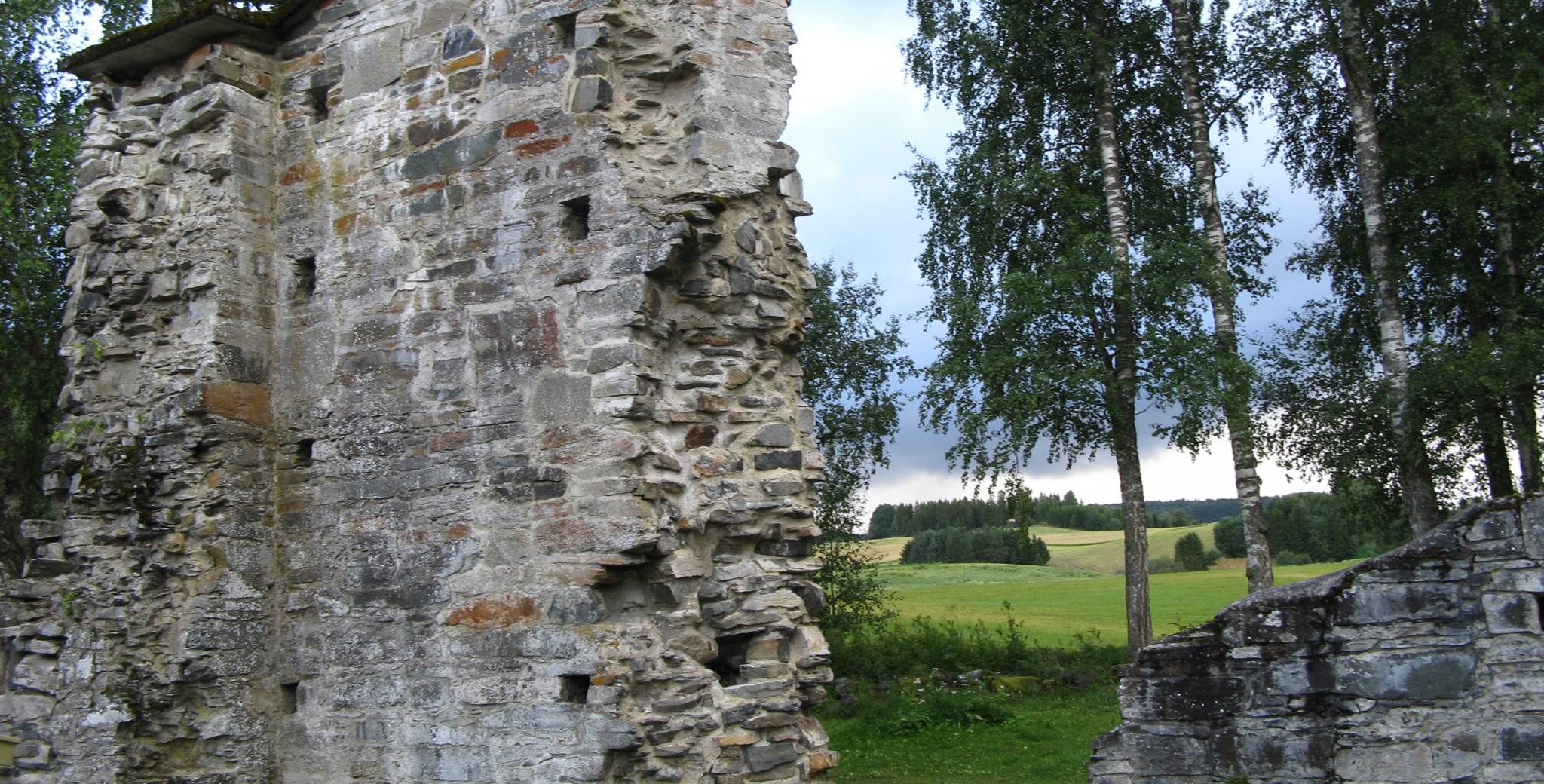

Levanger, Trøndelag
Owned by the National Trust of Norway since 1967.
Ruins of the monastery church and remains of the monastery. The ruins of the church are all that remains of the monastery. The ruins show a typical Cistercian church – cruciform with side chapels and straight-ended chancel. Most of the church walls are preserved to a height of 1–2 metres, with higher parts in the east and west. The church was used as a parish church until 1589. The monastery was probably closed down when a new Cistercian monastery was founded on Tautra island in 1207.
Wooden building consumed by fire. No trace of the monastery building can be seen today, but antiquarian L. D. Klüwer registered traces of a three-sided wooden building complex south of the church in 1813. The monastery buildings must have been made from wood and, together with the church, they would have formed a traditional monastery quadrangle. In additional to the central buildings that contained the dormitory (dormatorium), the talking room (parlatorium) and the refectory (refektorium), there have probably also been other buildings on the site such as workshops, byres and barns. We do not know when the monastery buildings were destroyed, but the presence of a fire stratum in the area suggests that Munkeby monastery was consumed by fire.
Monastic life of the Cistercians. The Cistercians wanted to return to the original form of monastic life with monks living a simple life and engaging in manual labour. The monasteries were often founded in remote areas, and the monks themselves had to cultivate new land. Conditions were favourable for agriculture in the area around Munkeby. The rhythm of monastic life was otherwise governed by the canonical hours in the form of Gregorian chanting. Eight times a day, those living in the monastery gathered in the monastery church for prayers, and the monks also gathered when mass was celebrated in the church.
Things to do in the area. The area of Trøndelag and Innherred has a lot to offer; from medieval churches at Sakshaug and Hustad, Stiklestad – site of the Battle of Stiklestad, Levanger – town of wooden houses, the Golden Detour at Inderøy to the Falstad Centre and Museum and much, much more.
Sources:
Ekroll, Øystein 2003: Munkeby-Tautra. Cisterciencernes klosterruiner i Trøndelag. Published by the Trøndelag branch of the National Trust of Norway. Trondheim.
Hommedal, Alf Tore 1994: ‘Munkeby kloster’, in: En reise gjennom norsk byggekunst. Published by the Directorate for Cultural Heritage and the National Trust of Norway. Oslo.
Lidén, Hans-Emil 1969: ‘Munkeby kloster ved Levanger’, in: The National Trust of Norway’s yearbook 1969. Oslo. ‘Klosteranlegg i Norge. En oversikt’. Fortidsminner issue 68. 1987
Opening hours
- The ruin is an open outdoor destination, free to visit.
- Guided tours for groups at appointment. See contactinformation.
Ticket prices
Visit us
Munkeberget7600 Levanger
Contact us
- Epost: dentronderske@fortidsminneforeningen.no
- Tlf: 740 13 165


